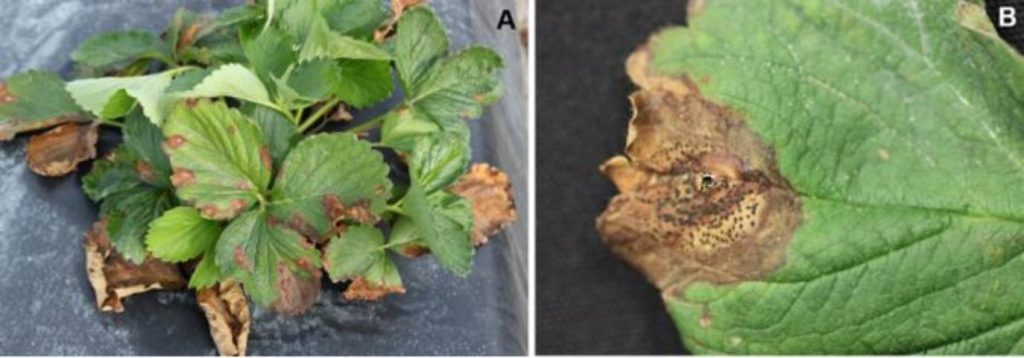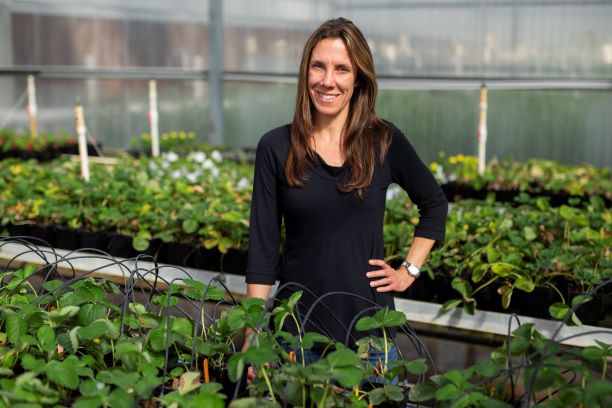
Credit: UF/IFAS GCREC
By Clint Thompson
The dawn of another strawberry season brings added concern of Neopestalotiopsis Fruit Rot disease. The disease that has devastated the state’s strawberry crop since the 2018-19 season is the top concern for producers heading into the season.
What can be done to manage the disease, which can cause leaf spots on strawberry plants? Natalia Peres, a Professor of Plant Pathology at the University of Florida/IFAS Gulf Coast Research and Education Center, said the first management tactic focuses on proper sanitation.
“What we learned by the end of last season was that the fungus survives in our soil from one season to another; soil and crop debris like the strawberry debris. Coming into this season we know that something needed to be done during the summer to try to destroy the crop residue,” Peres said. “One of the recommendations from our program was for growers to destroy the strawberry crop as soon as possible after they were done. A lot of them started disking very quick. The idea is to try to decompose that material as quick as possible, so the fungus won’t survive or not at high levels at least.”
Start with a Clean Slate

Another key tactic is for growers to start with as much of a clean slate as possible. The disease has been attributed to two nursery sources in North Carolina and Canada. Farmers need to ensure their plants are clean and disease free.
“If we start with plants that are becoming infected and put it in the soil infected, it’s just too much inoculum for us to manage. It’s important to bring in clean plants,” Peres said.
The disease develops quickly and produces spores on the leaves. It can cause severe leaf spotting and fruit rot under favorable weather conditions.
Peres encourages growers to scout their fields, especially early in the season and identify any symptomatic plants.
“We saw some farms last season, and they were trying to remove symptomatic leaves early on. It seemed to help to slow down, of course, it doesn’t completely eliminate the disease, but if we can just help to slow it down, it gives the plants a chance to establish and get a good size. Removing symptomatic leaves early should help,” Peres said.









